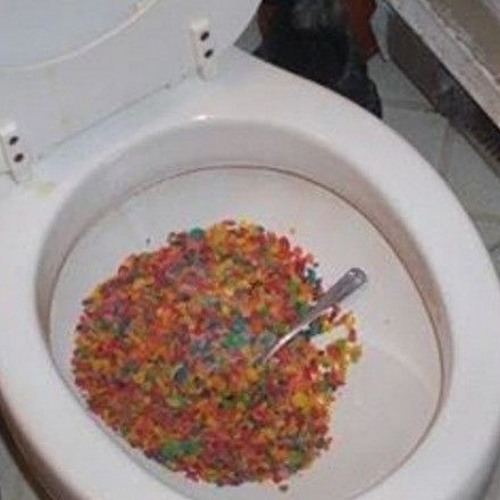Is it Advisable to Flush Food Down the Toilet?
Is it Advisable to Flush Food Down the Toilet?
Blog Article
Any individual may have their own unique conception with regards to Is it safe to flush food (especially rice) down the toilet?.

Intro
Many individuals are frequently faced with the dilemma of what to do with food waste, especially when it concerns leftovers or scraps. One common question that develops is whether it's fine to purge food down the commode. In this write-up, we'll delve into the reasons why individuals might think about purging food, the repercussions of doing so, and alternative methods for appropriate disposal.
Reasons people might think about flushing food
Lack of recognition
Some people might not recognize the possible harm caused by flushing food down the bathroom. They may wrongly believe that it's a safe practice.
Convenience
Flushing food down the bathroom might seem like a fast and very easy solution to throwing away undesirable scraps, especially when there's no close-by garbage can available.
Idleness
Sometimes, people might just choose to flush food out of sheer idleness, without taking into consideration the repercussions of their activities.
Repercussions of flushing food down the commode
Ecological impact
Food waste that winds up in rivers can contribute to pollution and damage marine ecosystems. Additionally, the water utilized to purge food can strain water resources.
Pipes problems
Flushing food can lead to clogged up pipes and drains, creating costly pipes repairs and troubles.
Sorts of food that need to not be flushed
Fibrous foods
Foods with fibrous structures such as celery or corn husks can obtain tangled in pipelines and cause clogs.
Starchy foods
Starchy foods like pasta and rice can absorb water and swell, resulting in clogs in pipelines.
Oils and fats
Greasy foods like bacon or food preparation oils must never be purged down the toilet as they can strengthen and trigger blockages.
Proper disposal approaches for food waste
Using a waste disposal unit
For homes equipped with waste disposal unit, food scraps can be ground up and flushed through the plumbing system. Nevertheless, not all foods appropriate for disposal in this fashion.
Recycling
Particular food packaging products can be reused, reducing waste and minimizing ecological influence.
Composting
Composting is an environment-friendly method to throw away food waste. Organic products can be composted and made use of to enrich soil for horticulture.
The significance of correct waste administration
Decreasing environmental injury
Appropriate waste administration practices, such as composting and recycling, aid lessen air pollution and maintain natural deposits for future generations.
Safeguarding plumbing systems
By staying clear of the practice of flushing food down the toilet, property owners can avoid pricey pipes repair services and preserve the stability of their plumbing systems.
Final thought
To conclude, while it may be alluring to flush food down the commode for convenience, it's important to understand the possible effects of this activity. By adopting correct waste management practices and getting rid of food waste properly, people can add to much healthier plumbing systems and a cleaner setting for all.
FLUSH FOOD DOWN THE TOILET?
FLUSHING FOOD CAN CAUSE BLOCKED DRAINS IN YOUR HOME
All of the plumbing fixtures in your home are connected to the same sewer pipe outside of your home. This outdoor sewer pipe is responsible for transporting all the wastewater from your home to the Council sewer mains. Even small pieces of food that go down the kitchen sink can cause problems for your sewer. It should therefore be obvious that flushing larger bits of food, such as meat, risks a clog in either the toilet itself or the sewer pipes. Flushing greasy food is even more problematic because oil coagulates when it cools, coating the interior lining of your pipes.
THE TOILET IS NOT A BIN
Food isn’t the only thing that people shouldn’t be flushing down the toilet. People use the toilet to dispose of all kinds of things such as tampons, makeup wipes, dental floss, kitty litter and even underwear. Water goes to great lengths to educate residents about the high costs and stress placed on wastewater treatment systems simply from people flushing the wrong stuff down the toilet. It costs taxpayers millions of dollars each year, and homeowners thousands in blocked drain repairs.
FLUSHING FOOD IS A WASTE OF WATER
Flushing food is a waste of our most precious resource - water. In June this year Level 1 water restrictions were introduced to protect water supply from drought conditions. Much of New South Wales continues to be affected by prolonged drought with recent figures revealing up to 97 per cent of the state remains in drought. Depending on whether you have a single or dual flush toilet, every single flush uses between five and 11 litres of water. In the current climate this is a huge amount of water to be wasting on flushing food that should be placed in the bin (or better yet, the compost).
https://www.jabplumbingsolutions.com.au/blog/can-you-flush-food-down-the-toilet

I ran across that post about Is it safe to flush food (especially rice) down the toilet? when doing a search on the search engines. Do you know about someone else who is intrigued by the topic? Feel free to share it. Thank you for your time. Return soon.
Click Here Report this page